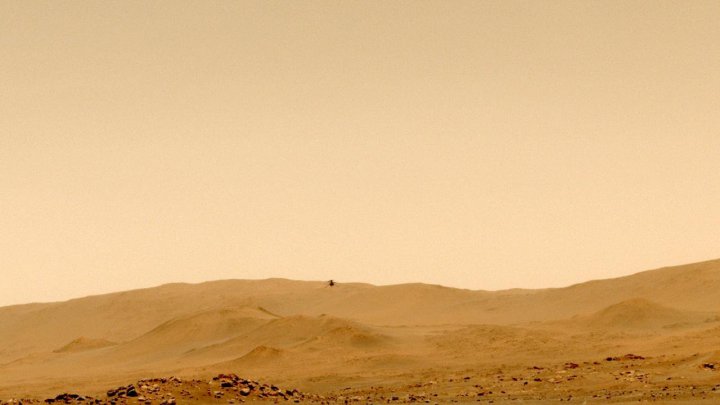
NASA’s Ingenuity helicopter has made another successful flight, this time traveling away from the location which has been its home base and exploring a new area of the red planet.
At 3:26 p.m. ET (12:26 p.m. PT) on Friday, May 7, the helicopter completed a one-way journey from its previous home base, named Wright Brothers Field, to a new airfield located 423 feet away to the south.
“We bid adieu to our first Martian home, Wright Brothers Field, with grateful thanks for the support it provided to the historic first flights of a planetary rotorcraft,” said Bob Balaram, chief engineer for Ingenuity Mars Helicopter at JPL, in a statement. “No matter where we go from here, we will always carry with us a reminder of how much those two bicycle builders from Dayton meant to us during our pursuit of the first flight on another world.”
Over a flight lasting 108 seconds, Ingenuity traveled to its new area and then flew upwards to its highest altitude yet of 33 feet. From this altitude, it was able to capture high-resolution color images of the area below. This kind of capability could be invaluable for future rover missions, with helicopters able to act as scouts and to identify safe driving paths or targets of interest.
“The fifth flight of the Mars Helicopter is another great achievement for the agency,” said Bob Pearce, associate administrator for NASA’s Aeronautics Research Mission Directorate. “The continuing success of Ingenuity proves the value of bringing together the strengths of diverse skill sets from across the agency to create the future, like flying an aircraft on another planet!”
Now Ingenuity is settled into its new airfield, it will continue to be in contact with the Perseverance rover. Perseverance will also be traveling south, and so the two will be able to stay in contact for a while longer.
“The plan forward is to fly Ingenuity in a manner that does not reduce the pace of Perseverance science operations,” said Balaram. “We may get a couple more flights in over the next few weeks, and then the agency will evaluate how we’re doing. We have already been able to gather all the flight performance data that we originally came here to collect. Now, this new operations demo gives us an opportunity to further expand our knowledge of flying machines on other planets.”



